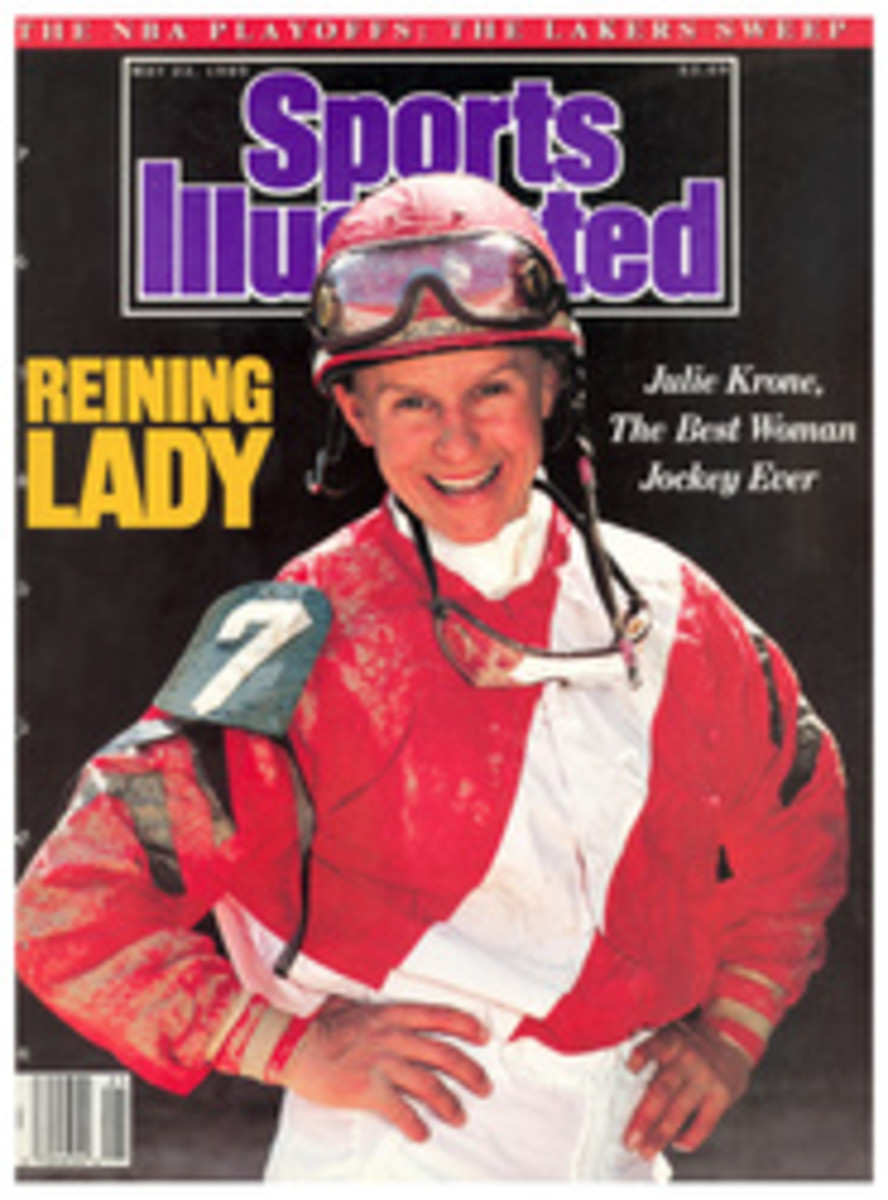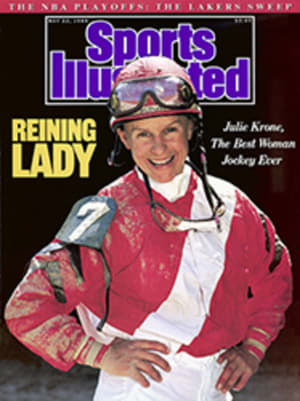
ROCKET RICK BURNS UP THE TRACK
For seven days the fans in the grandstands behind pit row at the Indianapolis Motor Speedway had been yelling "Hey, Rocketman!" at the slight driver with the gnarled nose and mashed feet—badges of courage acquired in a fuel fire at the Brickyard in 1981 and in a frightening crash at Sanair Super Speedway near Montreal in 1984. Rick Mears would look up and respond with a smile and a wave. He has grown used to the admiring name-calling.
It began in 1988, when he set a single-lap record of 220.453 mph and a four-lap qualifying mark of 219.198 mph before winning the Indy 500 for the third time. It resumed this year, when he spent a week practicing at speeds exceeding 226 mph. It peaked on Sunday when, to no one's surprise, he broke his own records and put his Penske-Chevrolet on the pole for the start of the 500 on May 28. His time of 224.254 mph for a single lap around the 2.5-mile track and his 223.885 mph four-lap average made him the top qualifier for the fifth time in his 12 races at Indy. "I wanted to hit 230," Mears said with a laugh, not kidding.
Mears is without peer on an oval track. Some observers think that were it not for his weak ankles, which make shifting a six-speed transmission difficult (Indy drivers shift gears only when they come in and go out of the pits), he would be the best on a road course, too. But Mears has proved he is magic at the Brickyard. He does it without tricks, relying on smoothness, consistency and sensitivity—the kind of sensitivity that enables him to feel the difference between 220 mph and 219.9 mph in the middle of a turn as the car is being drawn toward a concrete wall and the G force is making his body feel as if he's in, well, a rocket ship.
Mears's brother, Roger, says the sensitivity in the seat area of Rick's pants is a gift. Rocket Rick can play the steering wheel and the throttle of his 720-horse-power car as if he were racing through a Bach fugue on a pipe organ. Mears makes no claim to being macho. He's good, he says, because he doesn't like the consequences of being bad. "I don't like pain," he says. "It scares me a little bit."
The almost universal increases in qualifying speeds, compared with 1988, occurred because the Speedway has been resurfaced. But the week ended safely because the cars also were improved. Indy Car drivers have long insisted that lack of control, not speed, is what makes racing dangerous. Still, crossing the 220-mph barrier in any race car means dealing with the unknown. When asked the difference between 215 and 220 mph, Al Unser Jr., who qualified eighth in a Lola-Chevy, replied that the "short chutes [the brief straightaways connecting Turns 1 and 2 and Turns 3 and 4] had disappeared." In other words, the Brickyard is now a two-turn track. "You'd better have everything lined up when you come off 1 and 3," said Unser, "because if you don't you're going to [hit the wall] at 2 and 4."
First up to qualify was Al Unser Sr., Mears's Penske teammate. Every one of Big Al's four laps exceeded Mears's 1988 single-lap record. Big Al's average speed of 223.471 mph set a target for the field and was fast enough to give him hope that it might stand up.
A pragmatic man, Unser doesn't often hang it out with the hot shoes in qualifying, because grid position in a 500-mile race doesn't mean much. Unser's self-disciplined approach has proved to be wise, considering he has a record-tying four Indy wins. But this year he had a reason to chase the pole: PPG Industries was offering $100,000 to the driver who claimed it.
Big Al's run had been abetted by cloud cover, which kept the track surface cool and thus provided better adhesion, but the cover soon began to burn off. Between his run and Mears's, two hours later in the afternoon, 18 other drivers took their shots. All of them fell short of Big Al's four-lap record.
Michael Andretti briefly held second place, but his 220.940-mph run was disallowed because his car, a Lola-Chevy, turned out to be 4.5 pounds below the minimum weight of 1,550 pounds. Andretti requalified later in the day, but according to the rules, he will have to start the 500 behind the 20 drivers who qualified on their first attempts for the 33-car field. His 218.774 run left him in Row 7 of the three-abreast grid.
Mario Andretti, Michael's father and teammate, moved into second by averaging 220.486 mph, but he would be bumped to fifth and Row 2 by the end of the day. The outside front-row spot, next to Big Al, was eventually taken by two-time Formula One world champion Emerson Fittipaldi, who, like Mears and Big Al, drove a Penske-Chevy.
Penske drivers might have swept the first four qualifying postions if 1988 Indy Car point champion Danny Sullivan had not been missing from Sunday's lineup. Sullivan had been screaming down the back straight at 225 mph last Thursday when the engine cowling on his car blew off. He didn't know what had happened, but when he steered to enter Turn 3, the car spun out from under him, having lost much of its down force along with its bodywork. Sullivan smacked into the wall, suffering a concussion and a broken right forearm. A plate was installed in the arm the same day. Sullivan was expected to try to qualify this weekend for one of the seven remaining spots in the field.
Big Al stood along pit row, watching as Mears prepared for his run in the rocket, whose bright yellow paint gleamed in the sun. Because the track had warmed by this time, Unser thought he had a prayer. Mears's first lap was 223.187 mph, slower than Unser's average. Someone said to Big Al, "Rick will have to pick it up."
"He will," replied Unser. "Watch."
Mears did. The next time the yellow car came by, the track announcer cried, "It's a new track record!" and a smile broke across Big Al's face, not unlike the tight one a first runner-up gives in a beauty pageant. The scoreboard flashed another record for Mears's third lap, and Unser's smile washed away with his 100 grand.
By the end Mears had beaten Big Al by .298 of a second over the 10 miles. He idled down pit row, and Unser stepped out and gave him a sincere thumbs up. Mears returned the gesture, and through the narrow slit in his helmet you could see the respect in his eyes.
PHOTO
GEORGE TIEDEMANN
Mears raced to his wife, Chris, after his qualifying run (below) earned him $100,000.
PHOTO
DAVID HUTSON
[See caption above.]
PHOTO
LARRY HOSTETLER/A.F.P
Sullivan broke his arm in a crash on Turn 3, but he'll try again to qualify this weekend.

